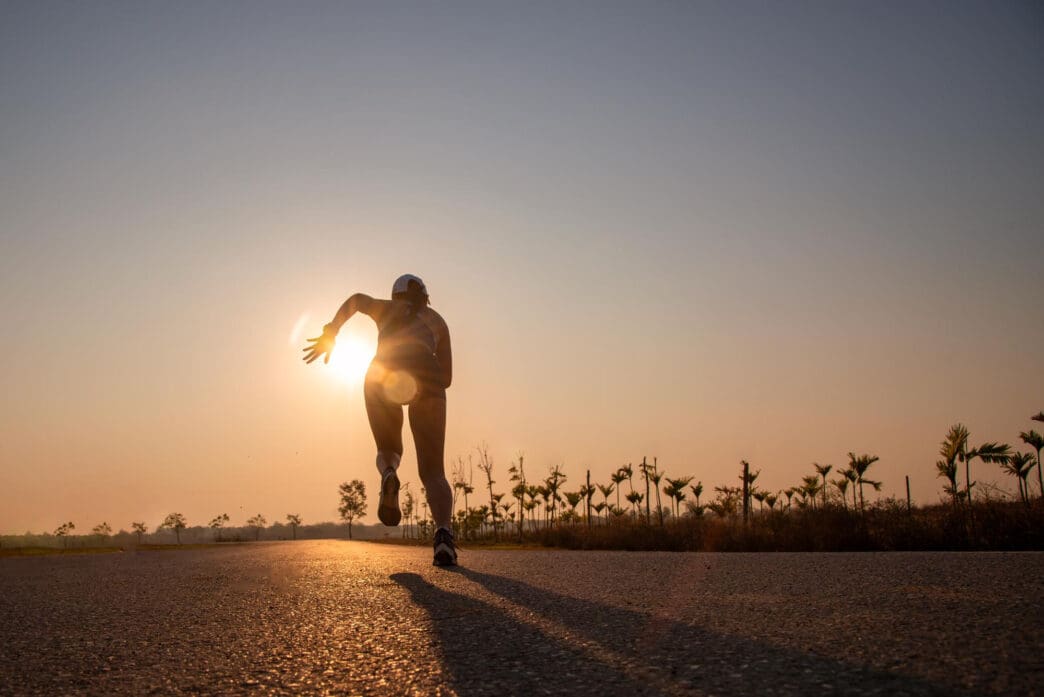A Quick Takeaway
The Story Behind the Trend
How to Make It Work for You
The Community View
For runners in Miami aiming to boost their performance, prevent injuries, and enhance overall athleticism, incorporating agility ladder drills into their training regimen is a strategic move. These dynamic exercises are designed to improve foot speed, coordination, balance, and the ability to change direction quickly, all critical components for navigating varied urban terrain, responding to unexpected obstacles, and excelling in races. By consistently practicing these drills, runners can develop a more efficient stride, reduce their risk of falls, and unlock a new level of responsiveness on the pavement or trail.
The Undeniable Benefits of Agility Ladders for Runners
While often associated with team sports, agility ladder training offers profound advantages for runners. The repetitive, precise movements required by these drills force the nervous system to adapt, leading to improved neuromuscular efficiency. This means your brain and muscles communicate more effectively, resulting in quicker reactions and more economical movement patterns.
One of the primary benefits is enhanced foot speed and quickness. Agility ladder drills train the feet to move rapidly and lightly, reducing ground contact time. This translates directly to a more efficient running stride, where less time spent on the ground means more forward momentum and less energy wasted.
Beyond speed, agility ladders significantly improve coordination and balance. Runners often focus solely on forward propulsion, but robust running requires integrated movement from head to toe. Drills that challenge lateral movement and single-leg stability build a stronger foundation, making runners less susceptible to stumbles and more capable of maintaining form when fatigued.
Furthermore, these drills are excellent for injury prevention. By strengthening the small stabilizer muscles in the feet, ankles, and knees, and improving proprioception (your body’s sense of its position in space), agility training helps prepare the body for the repetitive impact of running. A more resilient and responsive body is better equipped to handle the demands of training and racing.
Setting Up for Success: Your Agility Ladder
An agility ladder is a simple yet effective piece of equipment, typically consisting of flat rungs or straps laid out on the ground to form a series of squares. Most ladders are 15-20 feet long with 15-inch squares. When setting up, ensure the ladder is flat and securely placed on a non-slip surface, whether it’s the track at a local Miami park, a basketball court, or even a clear patch of pavement.
Before beginning any drills, always perform a dynamic warm-up to prepare your muscles and joints. This could include leg swings, arm circles, high knees, and butt kicks. Proper warm-up is crucial to prevent injury and maximize performance during the drills.
Key Principles for Effective Agility Ladder Training
To get the most out of your agility ladder workouts, keep these core principles in mind:
- Focus on Form Over Speed: Initially, prioritize executing each movement correctly. Speed will naturally improve as your coordination and muscle memory develop.
- Stay Light on Your Feet: Aim for quiet landings and minimal ground contact time. Imagine you’re running on hot coals.
- Engage Your Core: A strong core is essential for stability and efficient movement. Keep your abs braced throughout the drills.
- Use Your Arms: Arm drive is just as important in agility drills as it is in running. Pump your arms rhythmically to maintain balance and momentum.
- Look Ahead: Keep your gaze forward, not down at your feet. This helps with balance and prepares you for real-world running scenarios.
Top Agility Ladder Drills for Miami Runners
Here are several highly effective agility ladder drills that runners can incorporate into their training, perfect for a pre-run warm-up or a dedicated speed session.
1. Single-Foot Hops (Forward/Backward)
This drill targets single-leg stability and explosive power. Start at one end of the ladder. Hop forward on one foot, landing in each square. Maintain a slight bend in your knee to absorb impact. Once you reach the end, turn around and hop backward on the same foot, or switch to the other foot for the return trip. Repeat for 2-3 sets per leg.
2. Icky Shuffle
The Icky Shuffle is a fundamental drill for improving quick feet and coordination. Begin outside the ladder. Step into the first square with your right foot, then your left. Step out of the square with your right foot, then immediately step into the next square with your left foot, followed by your right. Continue this “in-in-out-out” pattern, moving down the ladder. Focus on a quick, rhythmic pace.
3. Two-In, Two-Out
Similar to the Icky Shuffle but emphasizing lateral movement. Start at one end, facing the ladder. Step into the first square with your right foot, then your left. Step out to the right side of the ladder with your right foot, then step your left foot to meet it. Immediately step into the next square with your left foot, then your right, and step out to the left side with your left foot, followed by your right. This creates a zig-zag pattern down the ladder.
4. Lateral Shuffle
This drill specifically builds lateral quickness and strengthens the muscles responsible for side-to-side movement, crucial for avoiding obstacles or navigating uneven terrain. Stand sideways at one end of the ladder, with the ladder to your left. Step into the first square with your left foot, then bring your right foot into the same square. Step out of the square to the left with your left foot, then bring your right foot out to meet it. Continue this pattern, moving sideways down the ladder. Repeat facing the other direction.
5. Carioca (Ladder Version)
The Carioca is excellent for hip mobility, coordination, and rotational power. Stand sideways to the ladder. Step your lead foot (e.g., left) into the first square. Cross your trailing foot (right) in front of your lead foot into the next square. Bring your lead foot (left) into the next square. Then, cross your trailing foot (right) behind your lead foot into the subsequent square. Continue this rhythmic crossing pattern down the ladder, alternating front and back crosses. Repeat facing the other direction.
6. In-Outs (Alternating Feet)
This drill enhances quickness and agility by rapidly moving feet in and out of the ladder squares. Stand at the end of the ladder, facing forward. Step both feet into the first square. Then, immediately step both feet out of the square (one foot on each side of the ladder). Step both feet into the next square, and then both feet out. Continue this “in-out” pattern down the ladder, moving as quickly as possible while maintaining control.
7. Hop Scotch
A classic for a reason, Hop Scotch improves balance, single-leg strength, and explosive power. Start at the end of the ladder. Hop into the first square on two feet. Hop out to the sides of the second square with one foot on each side. Hop into the third square on two feet. Continue this alternating pattern (two feet in, one foot each side out) down the ladder. Focus on soft landings and quick transitions.
8. Side Straddle
This drill focuses on quick lateral movements and hip abduction/adduction. Stand at the end of the ladder, facing forward. Step your lead foot (e.g., right) into the first square. Then, quickly step your left foot into the first square. Next, step your right foot out to the right side of the ladder, and your left foot out to the left side of the ladder. Now, step your right foot into the second square, then your left foot into the second square. Repeat the “in-in, out-out” pattern, moving laterally down the ladder.
Integrating Agility Ladders into Your Running Schedule
Agility ladder drills are versatile and can be incorporated into your training in several ways. They are an excellent addition to your dynamic warm-up before any run, especially speed work or track sessions. Performing 10-15 minutes of ladder drills can prime your nervous system and muscles for more intense efforts.
Alternatively, dedicate a separate session, 1-2 times per week, to agility work. This could be after an easy run or on a cross-training day. Aim for 3-5 sets of each drill, with a short rest between sets. As you become more proficient, you can increase the number of repetitions or reduce rest times to challenge your cardiovascular system further.
Progression and Safety Considerations
As you master the basic movements, you can progress by increasing your speed, adding a light weight vest, or combining drills. You can also integrate plyometric elements, such as higher jumps or more explosive movements, but always ensure proper form to prevent injury.
Always listen to your body. If you feel any sharp pain, stop immediately. Consistency is key, but so is smart training. Proper footwear with good lateral support is also recommended, especially for drills involving significant side-to-side movement.
Unleash Your Inner Athlete
Incorporating agility ladder drills into your running routine is a powerful way to transform your performance, reduce injury risk, and cultivate a more dynamic, responsive body. Whether you’re navigating the bustling streets of Miami, tackling a challenging trail, or striving for a new personal best, the enhanced foot speed, coordination, and balance gained from these drills will serve you well. Embrace the challenge, practice consistently, and watch your running prowess reach new heights.







